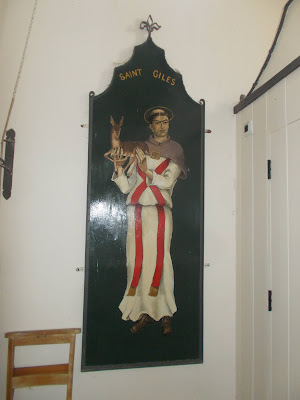Rachel Reckitt was born in St Albans in 1908. In 1922 her father, the architect Norman Reckitt, moved the family from Hertfordshire to Golsoncott near Roadwater. Rachel studied at the Taunton School of Art and then in the mid-1930s she moved to London to study at the Grosvenor School of Modern Art where she was taught by Iain Macnab. She exhibited with the Society of Wood Engravers from 1933 but then turned to painting and sculpture.
In 1937 Rachel made the first of 5 sculptured signs for Somerset pubs out of metal sheeting. Over the next 2 years she made signs for the Valiant Soldier at Roadwater, the White Horse Inn at Cleeve, the Butchers Arms in Carhampton, the Blackbird on the A38 near West Buckland and the Halfway House at Willand.
Rachel Reckitt studied at the Hammersmith School of Building Crafts from 1940 to 1945 and also studied lithography at the Central School of Art and Design.
In the late 1960s Rachel began to learn the craft of blacksmithing with Harry and Jim Horrobin. In 1974 she and Jim Horrobin were commissioned to make a tower screen for St Andrew's Church, Old Cleeve. Four fibre-glass panels were painted with the patron saints of the churches in the same benefice. Three large angels are arranged above the screen.
Examples of her work can be found in all the other parish churches around Golsoncott:
- Jacob wrestling with the Angel (1972), wooden carved angel (1961) and candelabra at St Bartholomew's Church Rodhuish
- Praying Figure carved from elm, St John's Church, Carhampton
- Reredos, capitals and pulpit decorated with passion flowers and foliage; portrait of St Giles; candelabra at Leighland Chapel
- Statue of St Nicholas in Withycombe
Rachel Reckitt travelled around Europe every year before and after the Second World War in search of inspiration for her work. She died in 1995. After her death the proceeds of her estate were used to establish a charitable trust called the Golsoncott Foundation. Rachel was the aunt of the author Penelope Lively.
























